
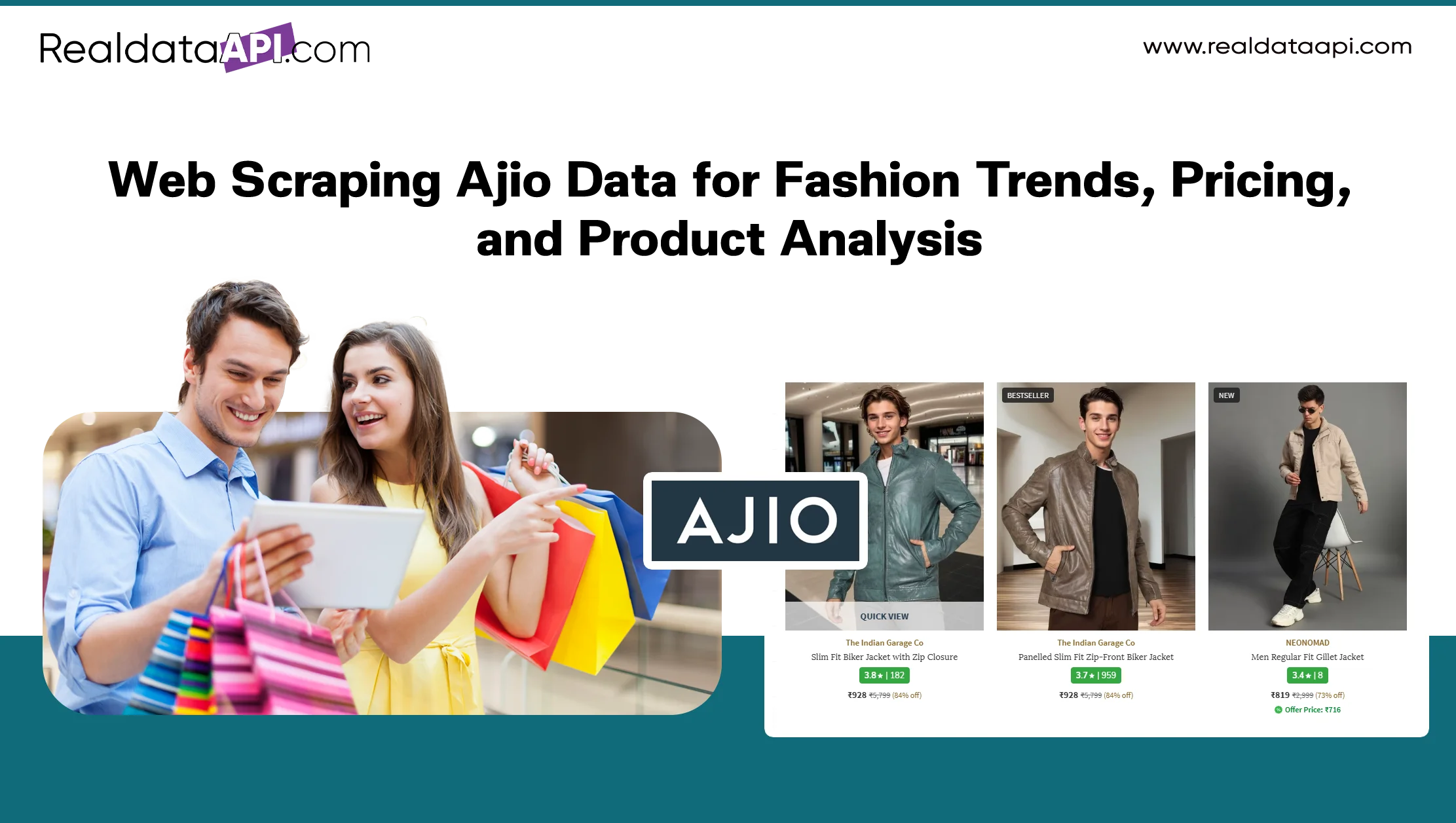
Introduction
In today's fast-paced retail ecosystem, fashion trends change overnight and consumer preferences shift just as quickly. Keeping up with new arrivals, price variations, and product performance has become crucial for fashion retailers, data analysts, and e-commerce strategists.
Among the many online fashion platforms in India, Ajio — a Reliance Retail venture — has carved a niche as one of the leading digital fashion destinations. It offers a vast catalog of clothing, accessories, footwear, and lifestyle products from Indian and international brands.
With the increasing volume of daily product updates, manual tracking of Ajio's data is nearly impossible. The answer lies in Ajio data scraping — an automated technique to extract fashion data, pricing trends, product details, and customer sentiment from Ajio in real time.
In this comprehensive blog, we'll explore how Web Scraping Ajio Data will empower businesses to uncover fashion trends, pricing patterns, and product-level insights for data-driven decisions.
Through tools like the Ajio Scraping API, fashion businesses can easily extract and analyze product-level insights at scale for dynamic retail decision-making.
Why Scrape Data from Ajio?
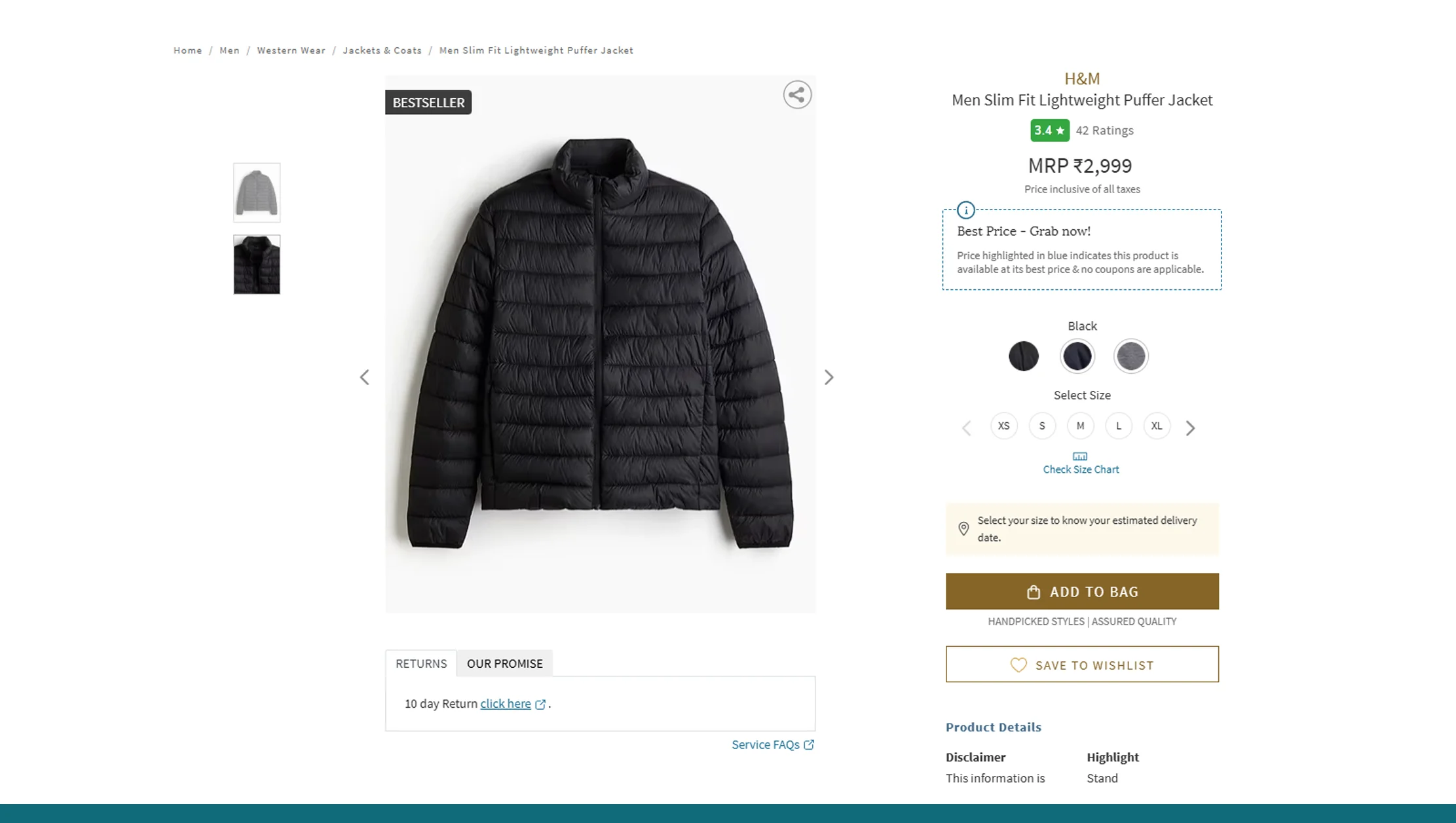
Ajio's product listings are rich with structured and unstructured data — including product names, descriptions, brand tags, pricing, discounts, and customer reviews. These data points provide a treasure trove of insights for multiple purposes:
1. Fashion Trend Analysis
Track emerging trends in fashion categories such as streetwear, ethnic wear, or activewear. Scraping helps identify:
- Trending brands and designs
- Popular color combinations
- Seasonal style patterns (e.g., festive collections or summer wear)
- New arrivals and fast-moving categories
2. Competitor Price Monitoring
Ajio's pricing structure often fluctuates due to sales, promotions, and competition. Scraping price and discount data helps:
- Compare Ajio's prices with competitors like Myntra, Flipkart, and Amazon.
- Identify real-time pricing strategies and seasonal discount patterns.
- Adjust your product pricing to stay competitive.
3. Product Performance Insights
Scraping Ajio reviews, ratings, and best-seller tags enables brands to understand:
- Which products sell most frequently
- Customer satisfaction levels
- Areas for improvement in design, fit, or material
4. Catalog Optimization
By analyzing how Ajio structures product titles, keywords, and images, e-commerce marketers can optimize their own listings for better SEO and conversions.
5. Market Research and Demand Forecasting
Aggregating Ajio data across categories reveals:
- Market demand for different styles
- Brand penetration across segments
- The evolving behavior of Indian fashion consumers
Types of Data You Can Extract from Ajio
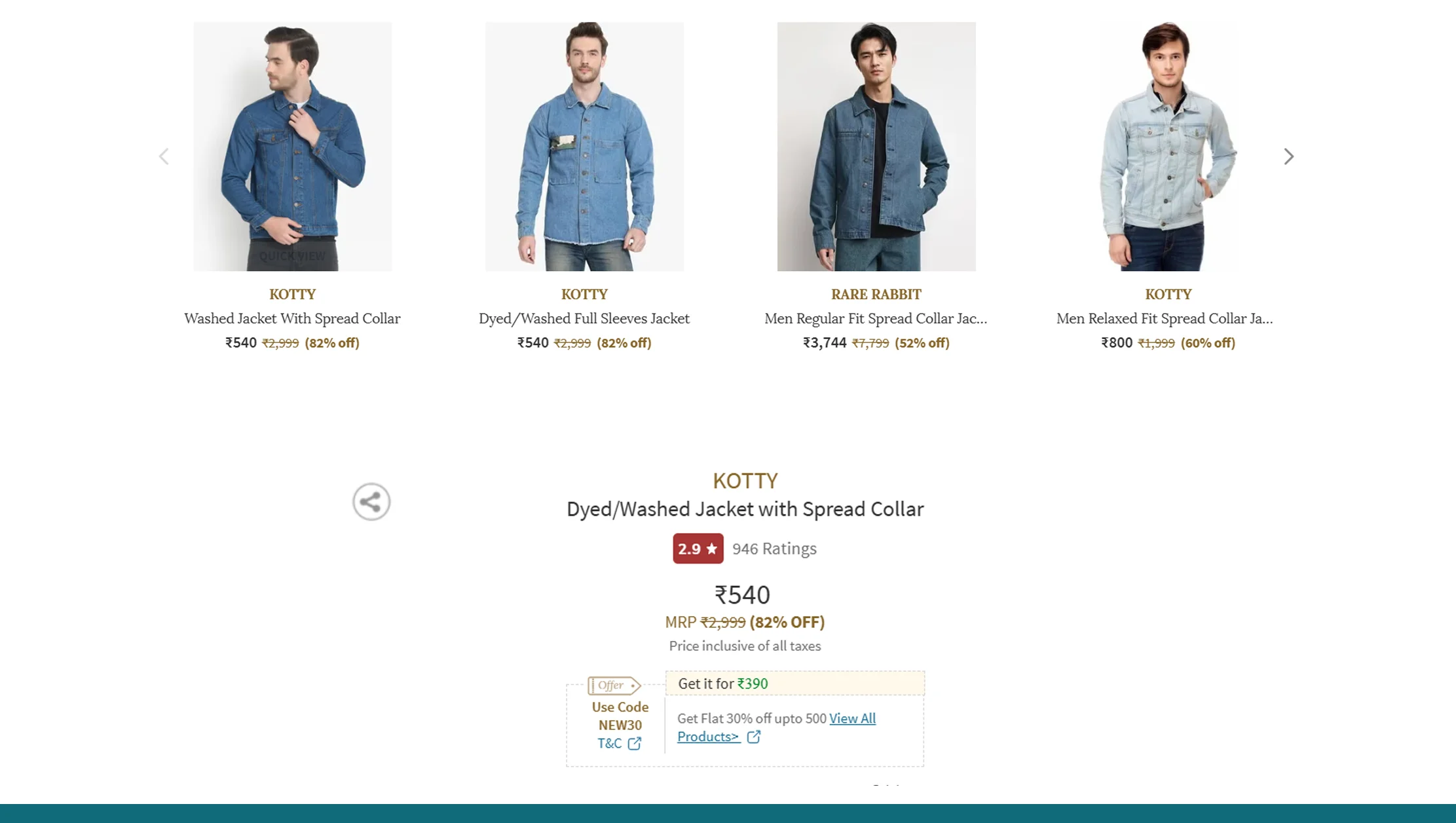
A well-designed scraper or Scrape Fashion Products API can collect diverse datasets from Ajio's site structure. Below are the main data categories:
| Category | Data Fields Extracted |
|---|---|
| Product Information | Product Name, Brand, Category, SKU, Product ID, Description, Fabric Type, Fit Type, Color |
| Pricing Details | Original Price, Discounted Price, Discount Percentage, Sale Offers |
| Stock Information | Availability Status, Sizes in Stock, Inventory Count (if accessible) |
| Images & Media | Product Image URLs, Color Variants, Zoom Views |
| Customer Reviews | Review Text, Ratings, Review Date, Verified Buyer Tags |
| Meta Information | Product URL, Product Tags, SEO Keywords, Launch Date |
| Category Data | Men's Wear, Women's Wear, Kids, Footwear, Accessories, etc. |
With automation, this data can be extracted daily, weekly, or monthly depending on your business needs.
How Web Scraping Works for Ajio
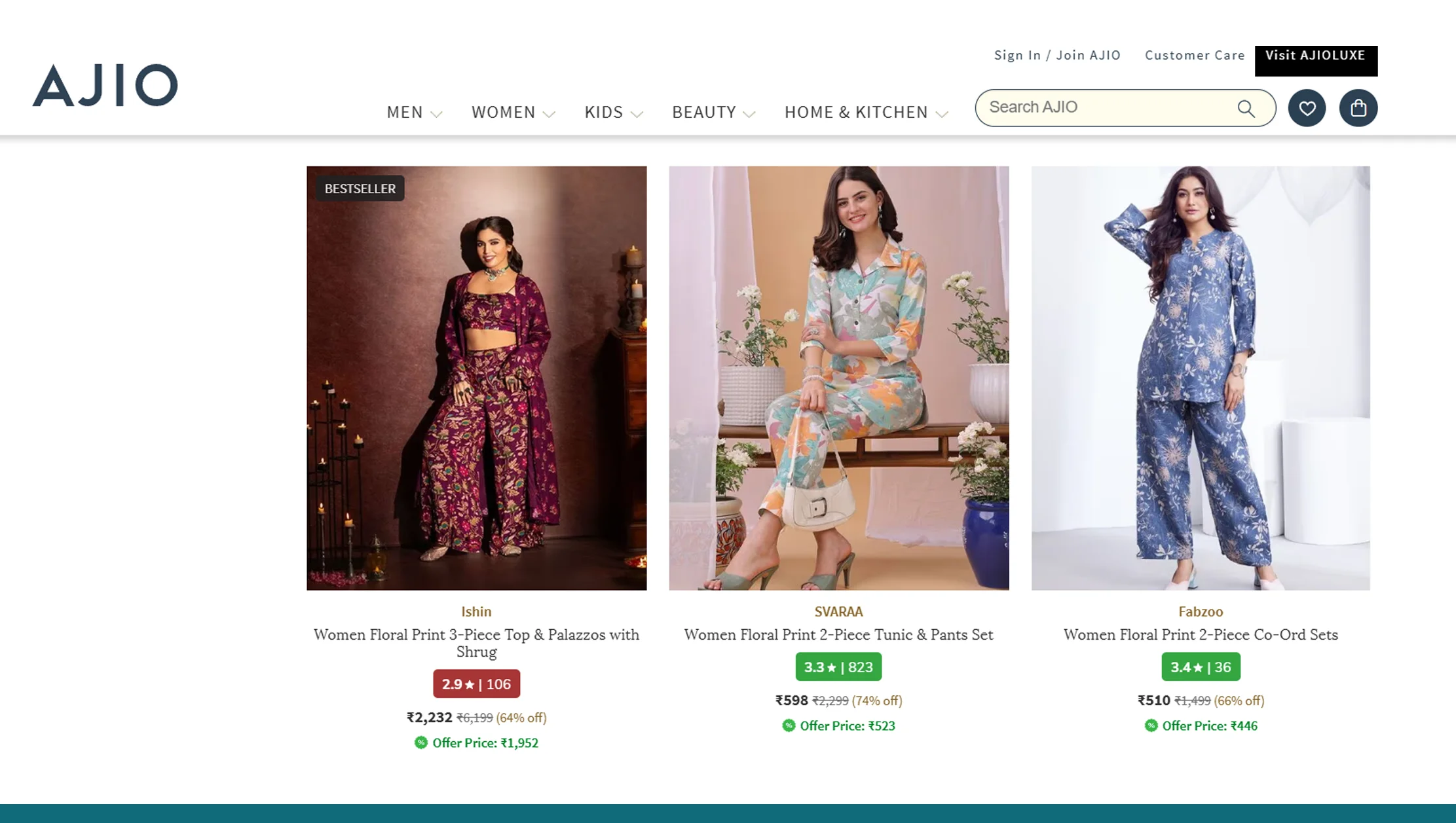
Let's break down the process of Web Scraping Ajio Data into practical steps:
Step 1: Identify Target URLs
Ajio organizes its catalog into clear categories such as:
- https://www.ajio.com/women
- https://www.ajio.com/men
- https://www.ajio.com/kids
Each category has product listing pages (PLPs) that can be iterated using pagination.
Step 2: Inspect the HTML Structure
Using browser developer tools, locate HTML elements such as:
- Product Title →
<div class="nameCls"> - Price →
<span class="price"> - Brand Name →
<div class="brand"> - Rating →
<div class="rating">
These tags guide your scraper on where to collect data.
Step 3: Use Scraping Tools or Frameworks
Depending on your requirements, you can choose:
- Python + BeautifulSoup: Best for simple HTML parsing.
- Scrapy: For scalable crawling of multiple pages.
- Selenium / Playwright: To handle dynamically loaded content (like price filters or popups).
- Real Data API Scraper APIs: For ready-to-use automated Ajio data extraction.
Step 4: Extract and Store Data
Your scraper navigates through pages, extracts the relevant data fields, and stores them in:
- CSV / Excel for easy visualization
- JSON for database storage
- Directly into SQL or NoSQL databases
Step 5: Data Cleaning & Normalization
Raw scraped data often requires:
- Removing duplicates or null values
- Normalizing price and brand formats
- Translating special symbols (₹, %, etc.)
- Structuring attributes for analysis
Step 6: Automate Scheduling
For real-time price tracking or trend monitoring, schedule your scraper to run automatically using cron jobs or cloud functions.
Challenges in Scraping Ajio Data and How to Solve Them
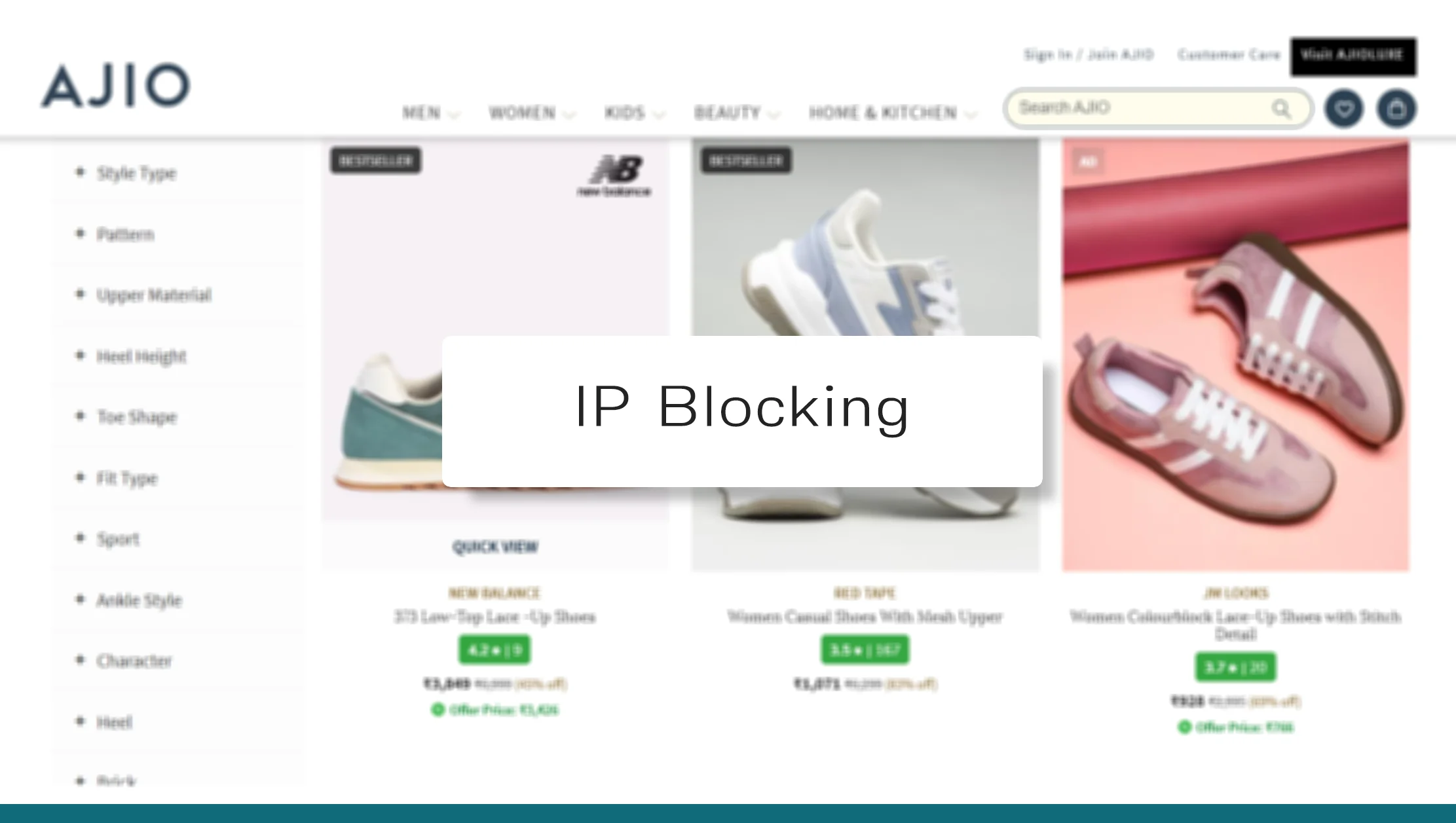
1. Dynamic JavaScript Rendering
Ajio uses client-side JavaScript to load product data dynamically.
Solution: Use headless browsers (Playwright, Selenium) that can render full pages before extraction.
2. Pagination and Lazy Loading
Not all products appear immediately on the first scroll.
Solution: Implement infinite scroll handling to ensure all items are loaded before data extraction.
3. IP Blocking & Rate Limiting
Excessive requests from one IP may lead to blocking.
Solution: Use rotating proxies, randomized delays, and user-agent rotation to mimic human behavior.
4. Data Consistency
Price or availability can change between requests.
Solution: Maintain timestamped logs and validate datasets regularly.
5. Legal & Ethical Considerations
Always follow robots.txt, terms of service, and data privacy norms. Scrape only publicly available information for legitimate business use.
Use Cases of Ajio Data Scraping
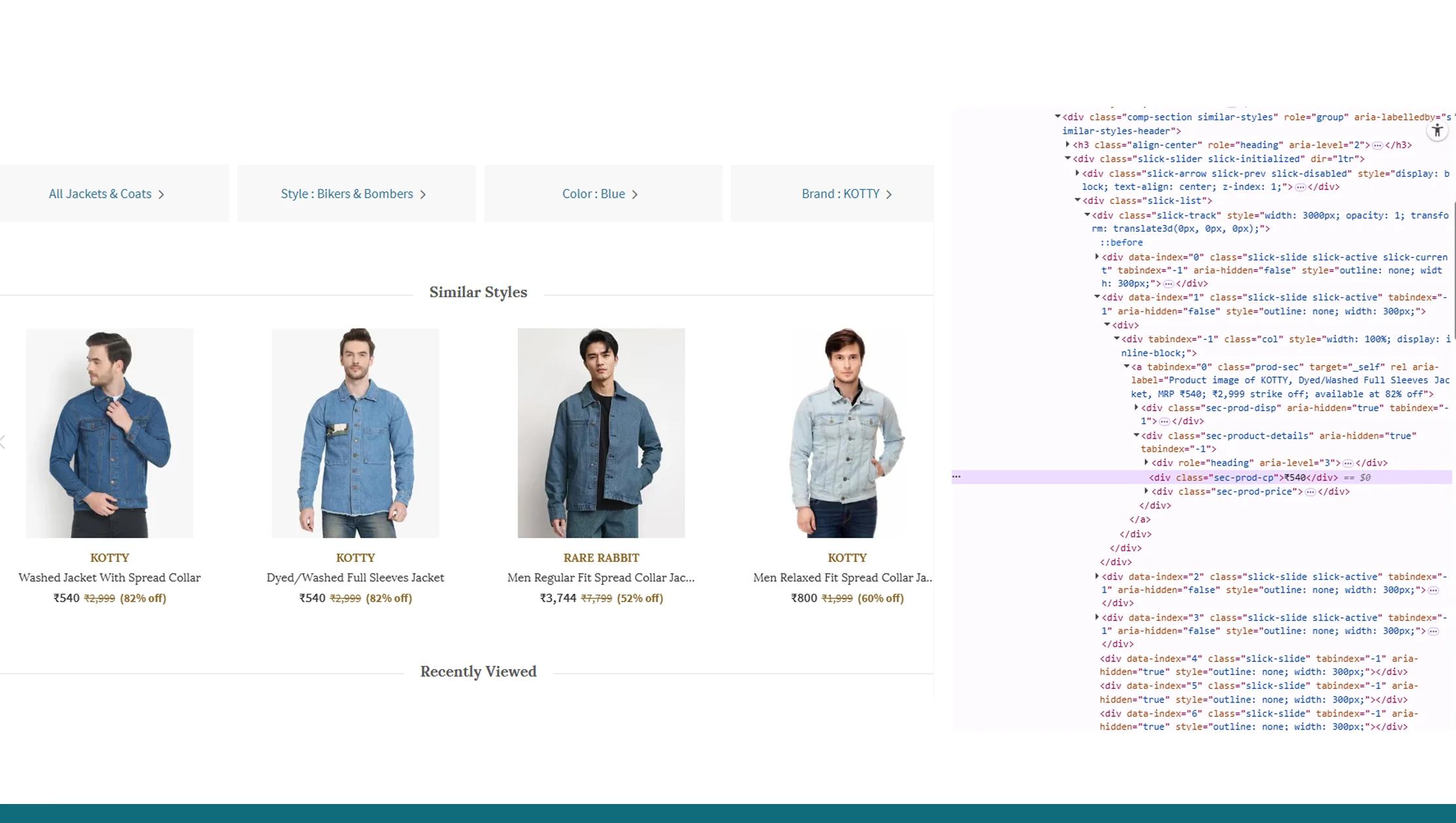
Ajio's massive product database makes it a perfect source for analytical and strategic applications across industries.
1. Retail Price Intelligence
Retailers can benchmark their product prices against Ajio to ensure competitive positioning.
- Track seasonal discounts (e.g., Diwali sale, End of Season Sale)
- Detect pricing strategies per brand (premium vs budget)
- Automate repricing for your online store based on market trends
2. Product Trend Tracking
By analyzing newly added SKUs or categories, analysts can identify emerging trends. Example:
- Rise in "Athleisure" products or "Sustainable Cotton" tags
- Increasing popularity of gender-neutral fashion items
3. Brand Performance Analytics
Extract Ajio brand-wise data (e.g., Puma, Levi's, Marks & Spencer) to:
- Compare average price ranges
- Monitor new arrivals
- Analyze product volumes per brand
4. Discount and Promotion Monitoring
Scrape and analyze discount patterns:
- Which products are discounted most frequently?
- What percentage discount triggers the highest engagement?
- Which brands participate most in flash sales?
5. Consumer Review Sentiment
Customer feedback is a goldmine for improving products. Analyze review texts to determine:
- Positive vs. negative sentiment
- Common issues (fit, fabric quality, delivery)
- Popular keywords that drive satisfaction
6. E-commerce Competitor Benchmarking
If you manage an e-commerce store, Ajio data helps benchmark your:
- Product mix
- Pricing structure
- Visual merchandising (images, descriptions, categorization)
Sample Ajio Data Structure
| Brand | Product | Category | Original Price | Discount Price | Discount % | Rating | Availability | Size | URL |
|---|---|---|---|---|---|---|---|---|---|
| Levi's | Men's Slim Fit Jeans | Men's Wear | ₹3,999 | ₹2,199 | 45% | 4.4 | In Stock | 30-38 | ajio.com/p/12345 |
| Puma | Women's Sports Shoes | Footwear | ₹5,499 | ₹3,299 | 40% | 4.6 | In Stock | 6-10 | ajio.com/p/98765 |
| Biba | Printed Kurta | Women's Wear | ₹2,499 | ₹1,499 | 38% | 4.3 | Out of Stock | S-XL | ajio.com/p/24680 |
These datasets can be fed into data visualization or analytics platforms for actionable insights.
Analyzing Ajio Data for Insights
Once scraped and cleaned, the Ajio data can be analyzed using tools like:
1. Python & Pandas
Use Python libraries to filter, aggregate, and analyze:
- Price distributions
- Brand-wise averages
- Trend timelines
2. Power BI or Tableau
Create dashboards displaying:
- Price comparison charts
- Trending categories
- Seasonal sales patterns
3. Sentiment Analysis Tools
Use NLP models (like TextBlob or KoNLPy) for analyzing consumer reviews and feedback sentiment.
4. Machine Learning for Forecasting
Feed Ajio data into predictive models to forecast:
- Next season's top-selling categories
- Ideal pricing range for maximum conversions
- Optimal stock levels
Integrating Ajio Data into Business Systems

You can automate the scraped data pipeline to integrate with:
- ERP Systems – For inventory and supply chain synchronization
- CRM Tools – To personalize customer recommendations
- Pricing Engines – For automated repricing
- Market Intelligence Dashboards – For real-time tracking
This seamless integration ensures continuous intelligence flow across your business ecosystem.
Ethical and Legal Considerations in Ajio Data Scraping
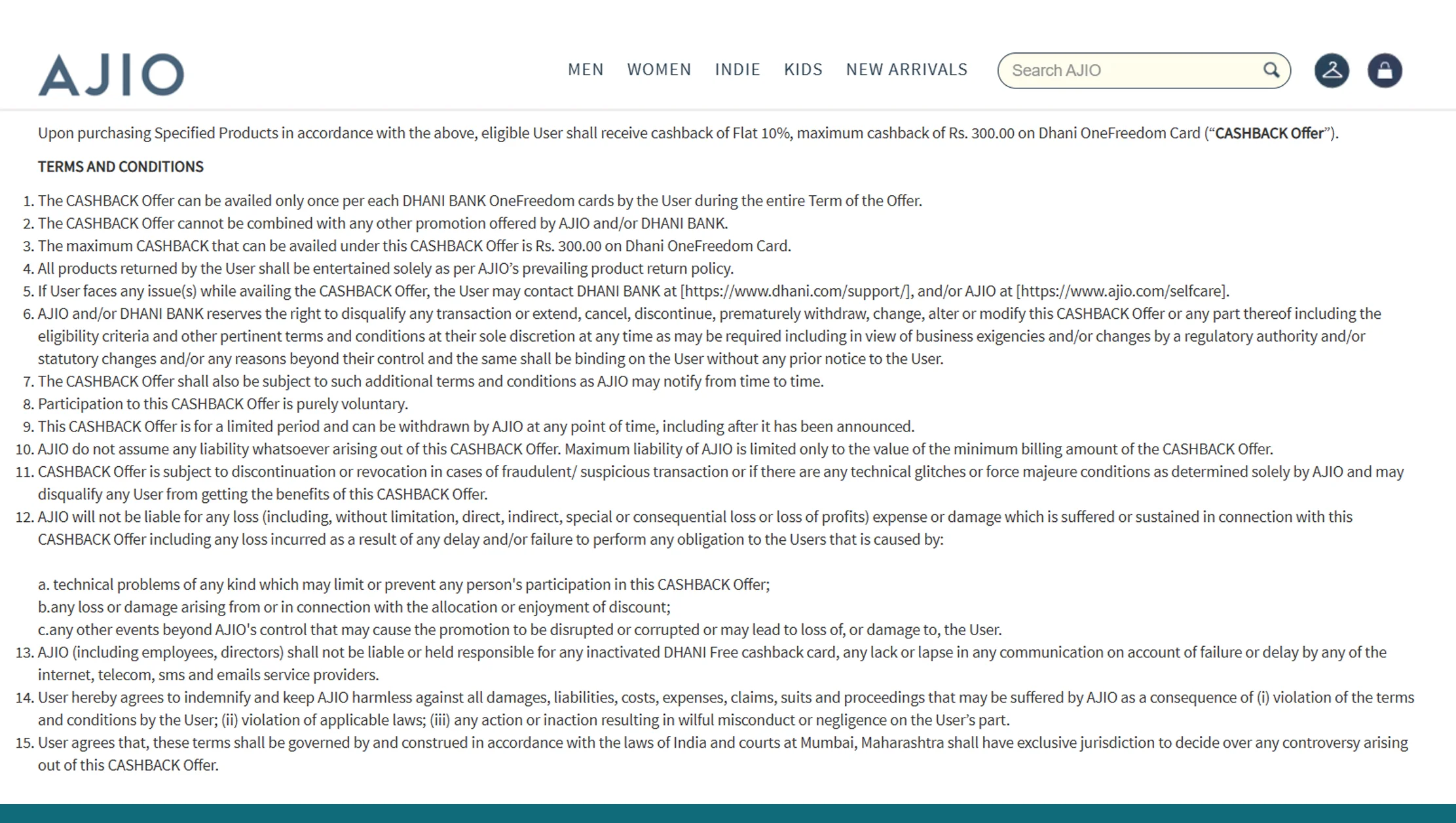
While Web Scraping Ajio Data can offer competitive intelligence, it's essential to follow ethical guidelines:
- Scrape only publicly available data.
- Avoid login-required pages or private APIs.
- Respect robots.txt and site policies.
- Use data responsibly for analysis, not replication.
Businesses often prefer working with professional scraping service providers like Real Data API, who ensure all data collection adheres to compliance and fair use standards.
How Real Data API Helps with Ajio Data Extraction
Real Data API specializes in large-scale e-commerce data extraction and provides structured datasets from platforms like Ajio, Myntra, Amazon, and Flipkart.
Our Ajio Data Scraping Services Include:
- Product data scraping across all categories
- Real-time price and discount monitoring
- Fashion trend tracking via tags and metadata
- Customer review and sentiment data collection
- Automatic data feed delivery in JSON, CSV, or API
Why Choose Real Data API Solutions:
- Scalable, cloud-based scraping infrastructure
- Proxy rotation and dynamic rendering support
- Regularly refreshed data with zero downtime
- GDPR and Indian data law compliance
- Tailored dashboards for visualization and analysis
We help retailers, brands, data scientists, and marketing agencies leverage Ajio data for actionable business outcomes — from competitive pricing to trend prediction.
Future of Fashion Analytics with Ajio Data

With AI and data automation as well as Web Scraping Services, the future of fashion retail intelligence is evolving. Scraped Ajio datasets and Fashion & Apparel Datasets can power:
- Recommendation engines for personalized styling.
- Dynamic pricing models based on competitor updates.
- AI-driven trend forecasting for inventory planning.
- Omnichannel marketing with data-backed insights.
In essence, Ajio web scraping bridges the gap between data and decision-making — giving businesses the foresight they need in an ever-changing fashion landscape.
Conclusion
In the digital-first fashion world, data is the new design fabric. By leveraging Ajio web scraping, businesses can uncover rich insights into fashion trends, pricing fluctuations, and customer behavior — transforming raw data into actionable intelligence.
Whether you're a fashion retailer optimizing pricing, a market researcher studying trends, or a brand tracking consumer sentiment, Ajio's data ecosystem offers endless opportunities for analytics and innovation.
With Real Data API's Ajio data scraping services, you can automate data collection, maintain compliance, and gain a strategic advantage in the Indian fashion market.













